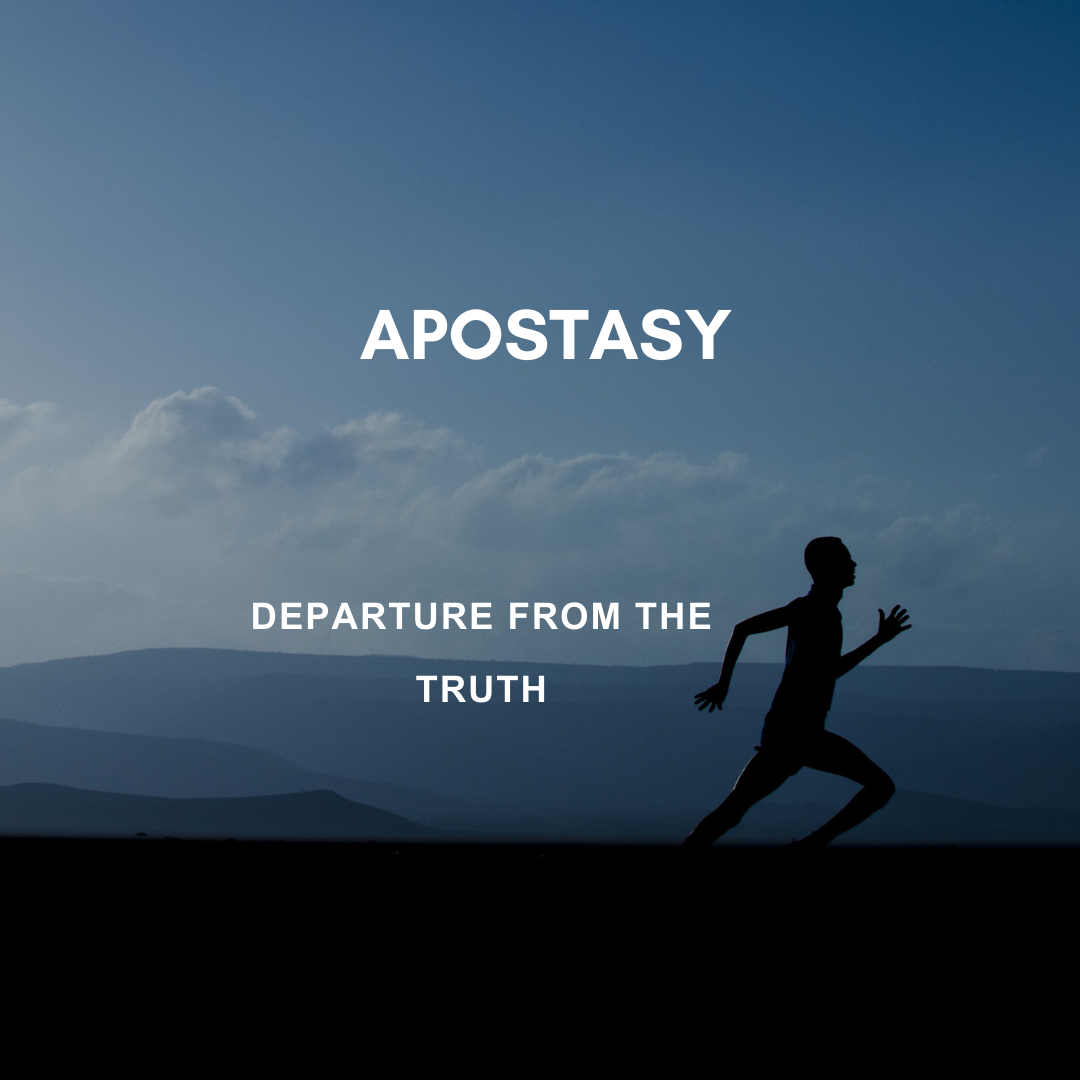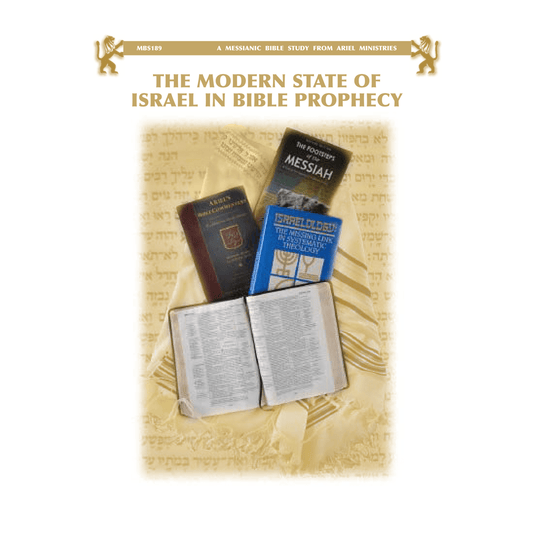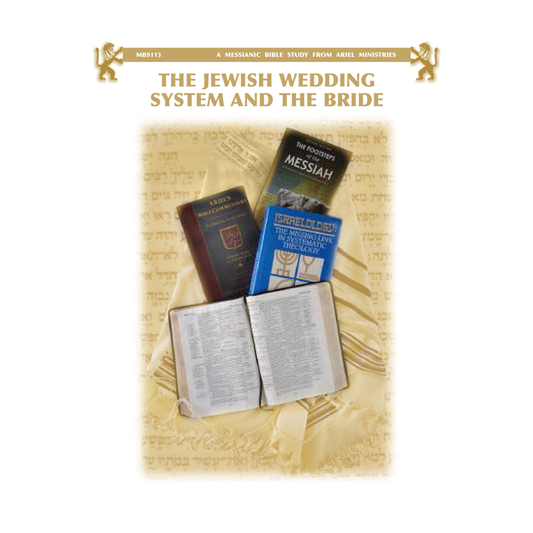1. The Definition of Apostasy
Apostasy can be defined as “the departure from the truth that one professed to have.” It does not mean that they actually possessed the truth. Seldom do apostates actually possess the truth. Rather, it is a departure from a truth they professed to have because of an affiliation with a particular church. For example, a minister of a Baptist, Presbyterian or Methodist church is professing, by virtue of his position, to believe the doctrines of the Baptist, Presbyterian or Methodist churches, respectively. But actually, the apostate denies these doctrines and has departed from the truth that he professes to have. This has indeed been the characteristic of the visible church in these decades of the 20th century.
2. The Certainty of Apostasy
That there would be an apostasy of the church in the latter days was clearly predicted. Before the Tribulation is to begin, the apostasy must come first. Thus, it was inevitable that the church would become apostate in the closing days of its history.
That there would be an apostasy of the church in the latter days was clearly predicted in 1 Timothy 4:1: But the Spirit says expressly, that in later times some shall fall away from the faith, giving heed to seducing spirits and doctrines of demons.
Again, the prophetic Word declares that in later times there would be a falling away or an apostasy from the faith. The Greek word for “falling away” is aphistēmi. This verb can refer both to a physical and a spiritual departure. The noun form of this verb is apostasia, translated into English as “apostasy.” Before the Tribulation is to begin, the apostasy must come first. The Laodicean church is a description of the apostasy of the last days.
3. The Character of Apostasy
In three New Testament passages, there is a description of the character of the apostasy. The first is found in 1 Timothy 4:1–3, continuing here from above with verses 2–3: through the hypocrisy of men that speak lies, branded in their own conscience as with a hot iron; forbidding to marry, and commanding to abstain from meats, which God created to be received with thanksgiving by them that believe and know the truth.
In verse 1, this passage declares that the source of apostasy is demons, for apostates have essentially given in to seducing spirits and are preaching a system of doctrine, which is the doctrines of demons. Furthermore, in verse 2, they speak lies through hypocrisy, and their conscience has become insensitive. And in verse 3, part of this demonic doctrine involves an attack on the liberty of the believer, characterized by forbidding to marry and the instructing to refrain from eating meats. Such legalistic apostasy will increase as church history unfolds throughout the last days and these elements will become more prevalent in the visible church.
The second passage relating to the character of the apostasy is found in 2 Timothy 3:5: holding a form of godliness, but having denied the power thereof: from these also turn away.
In verses 1–4, there is a description of the general characteristic of the world during the last days, and it can hardly be denied that these elements are true in this present day. But verse 5 centers on the religious front where the characteristics of the last days will be men having a form of godliness, but [denying] the power thereof. Apostate ministers, retaining the clerical garb and church titles, have a form of godliness, but [they have] denied the power thereof, for they have denied the true power of godliness.
The third passage is found in 2 Peter 2:1–22. As one reads through this lengthy passage, he does not see Peter displaying any attitude of love or tolerance towards apostates. The Bible is not tolerant toward apostasy and castigates it very severely as these verses clearly show.
4. The Teachings of Apostasy
Having described the character of apostasy, another question involves their teachings. What, after all, is the mark of the apostate? In 2 Peter 2:1, their teachings are portrayed as destructive denials: But there arose false prophets also among the people, as among you also there shall be false teachers, who shall privily bring in destructive heresies, denying even the Master that bought them, bringing upon themselves swift destruction.
The teachings of the apostates are called destructive heresies. The content entails denying even the Master that bought them. In other words, the content of apostate teaching involves the denial of the Person and work of Yeshua the Messiah.
Other New Testament passages give us more specific aspects of this denial. First, a denial of the Trinity is dealt with in 1 John 2:22–23: Who is the liar but he that denies that Jesus is the Christ? This is the antichrist, even he that denies the Father and the Son. Whosoever denies the Son, the same has not the Father: he that confesses the Son has the Father also.
Secondly, 1 John 4:2–3 comments on a denial of the Incarnation: Hereby know ye the Spirit of God: every spirit that confesses that Jesus Christ is come in the flesh is of God: and every spirit that confesses not Jesus is not of God: and this is the spirit of the antichrist, whereof ye have heard that it comes; and now it is in the world already.
The same is true in 2 John 7: For many deceivers are gone forth into the world, even they that confess not that Jesus Christ came in the flesh. This is the deceiver and the antichrist.
Thirdly, the denial of the Second Coming of the Messiah is the concern of 2 Peter 3:3–4: knowing this first, that in the last days mockers shall come with mockery, walking after their own lusts, and saying, Where is the promise of his coming? for, from the day that the fathers fell asleep, all things continue as they were from the beginning of the creation.
Thus, the teachings of apostasy involve the destructive denials of the Person and work of Yeshua the Messiah, especially with regard to His place in the Trinity, His deity, His Incarnation as the God-Man by means of the Virgin Birth, and the fact that He is coming back physically. Basic to all these denials, of course, is the denial of the inspiration of the Scriptures themselves. Once a person moves away from the acceptance of the authority of Scripture, there is no longer any safeguard for other crucial doctrines.
5. The Deeds of Separation of Apostasy
In Jude 17–19, the deeds or types of actions preferred by apostates are given: But ye, beloved, remember ye the words which have been spoken before by the apostles of our Lord Jesus Christ; that they said to you, In the last time there shall be mockers, walking after their own ungodly lusts. These are they who make separations, sensual, having not the Spirit.
One type of deed that will be performed by apostates is mockery (vv. 17–18). They will mock the Fundamentals of the Faith; such as the verbal inspiration of the Scriptures, the Virgin Birth, the substitutionary death of the Messiah, and His physical Resurrection from the dead. 2 Peter 3:3–4 states that they will also mock the doctrine of the Second Coming of the Messiah.
A second deed is that of creating schisms or separations (v. 19). Because they begin denying some of the Fundamentals of the Faith, they convince some but not others. In the course of time, the two factions develop into a split within the church. The process begun by mockery results in a division of the church. Throughout this Age of Apostasy, there has been schism after schism. Church after church and denomination after denomination have split over the destructive denials of the Trinity, the Incarnation, and the Second Coming of the Messiah.
These characteristics, heretical teachings, and deeds of separation have become more prevalent as church history has progressed from about 1900 to the present day. This is the age of the church of the apostasy.
Excerpt from Dr Arnold Fruchtenbaum:
The Footsteps of the Messiah - The Laodicean Church Pg 73-78






